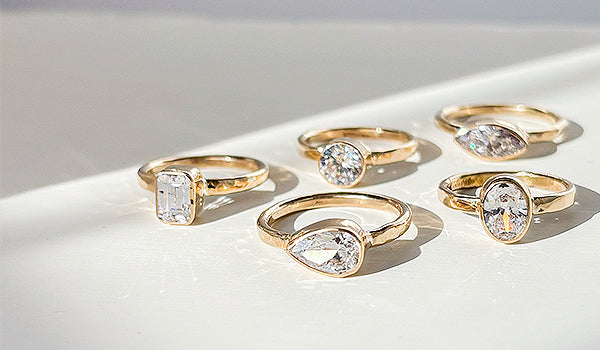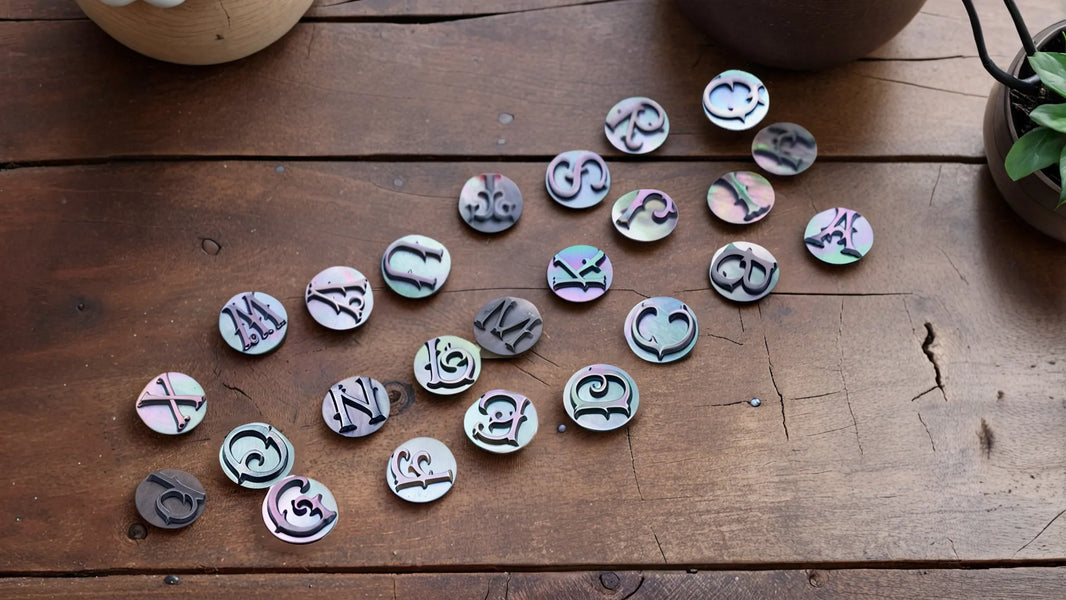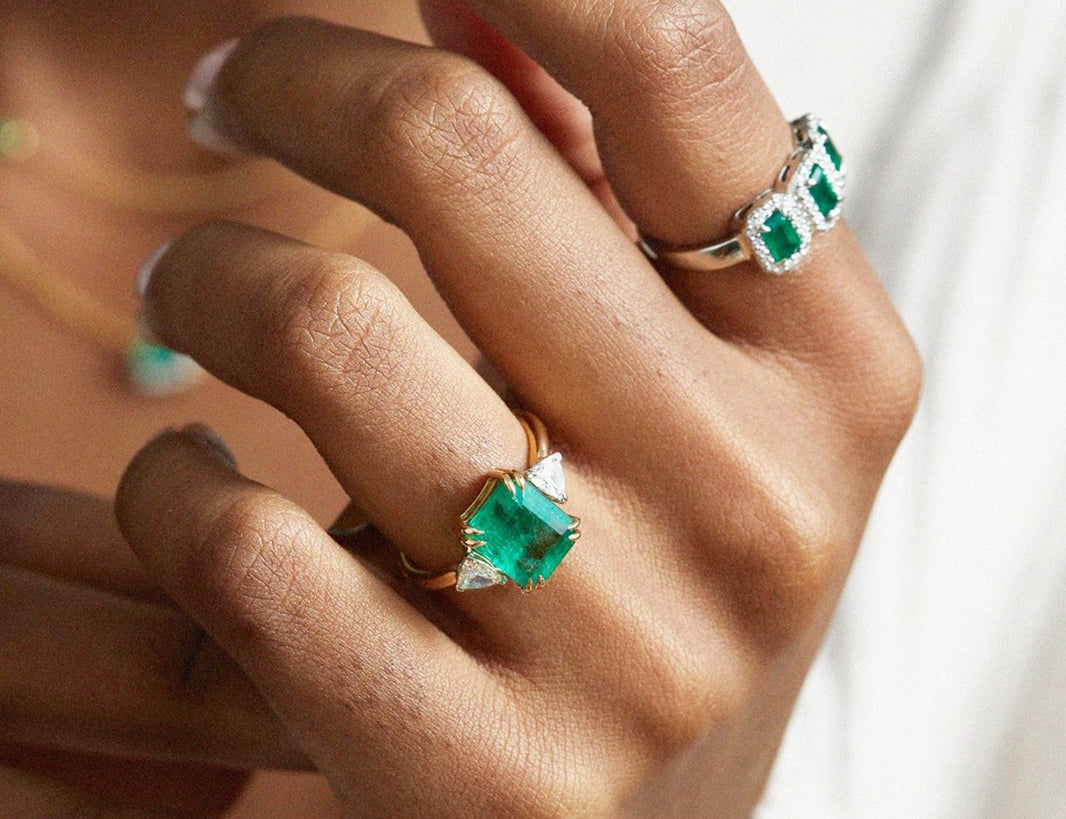A marriage proposal is a breath‑held instant where meaning gathers in metal and light. If you’re searching for a center stone that honors the emotion while respecting your budget and values, moissanite deserves your full attention. As a passionate connoisseur who has guided countless couples at the counter and under the loupe, I’ll show you exactly how moissanite performs, how it compares to diamonds and lab‑grown diamonds, and how to choose a ring that glows as brightly in five years as it does on the day you say yes.
Meet Moissanite: A Modern Classic with Stellar Origins
Moissanite is a laboratory‑grown gemstone composed of silicon carbide. It was first identified in a meteor crater in the late 19th century and today is cultivated in controlled environments for jewelry. It is not a diamond and not a lab‑grown diamond; it’s a distinct gemstone with its own optical personality. In daily wear, moissanite is admirably durable, ranking about 9.25 on the Mohs scale, and it’s celebrated for eye‑catching sparkle and rainbow “fire.” Retailers and style guides consistently position it as a diamond alternative with meaningful ethical and budget advantages (Cullen; Beyond Two Rings; Valerie Madison).
A quick definitional note matters here. The GIA 4Cs education platform distinguishes between laboratory‑grown diamonds, which are chemically identical to natural diamonds, and diamond simulants like moissanite, which merely imitate the look of diamond. That difference is foundational when comparing performance, grading, and pricing (GIA 4Cs). By the mid‑2010s, colorless lab‑grown diamonds were widely available, which is one reason shoppers sometimes confuse them with moissanite. They are not the same, and your buying approach should reflect that.
Brilliance, Fire, and “The Look” in Real Life
If diamonds are celebrated for balanced white light return and crisp scintillation, moissanite leans into exuberant dispersion—the colorful flashes that read as “fire.” Many buyers describe moissanite as livelier; some prefer the restrained sparkle of a well‑cut diamond. In my own side‑by‑side demos, round brilliant moissanite shows more overt fire under warm restaurant lighting, while daylight tempers the effect and brings out white brilliance. This is partly why couples who love moissanite also love big celebratory environments: the stone plays beautifully with varied light.
Cut and shape modify that performance. Round brilliant moissanite tends to maximize sparkle, which aligns with findings from retailers who see it daily (Cullen). Step‑cut shapes such as emerald and Asscher trade some sparkle for an elegant, mirror‑like effect. “Crushed ice” faceting—a fashionably irregular internal facet pattern—creates a glittery, icy scintillation that some adore and others find busy. My practical tip is simple and decisive: view your short list in daylight and under warm LEDs before you buy, since lighting drives your perception of fire more than any spec sheet.
The Fastest Way to Compare Options
Attribute |
Moissanite |
Natural Diamond |
Lab‑Grown Diamond |
Composition |
Silicon carbide (distinct gemstone) |
Carbon (diamond) |
Carbon (diamond) |
Origin |
Lab‑grown |
Earth‑mined |
Lab‑grown |
Hardness (Mohs) |
About 9.25 |
10 |
10 |
Optical character |
Very high brilliance with more rainbow fire |
Balanced white light with crisp scintillation |
Similar to natural diamond |
Price positioning |
Significantly lower; often up to 90% less than comparable diamonds (Flawless Moissanite) |
Highest |
Lower than natural; higher than moissanite (GIA context + market consensus) |
Availability & consistency |
Highly consistent due to lab production |
Natural variance |
Broadly available in consistent quality since mid‑2010s (GIA 4Cs) |
Sourcing & ethics |
Lab creation, no mining |
Mining impacts vary by source |
Lab creation, no mining |
This frame lets you align aesthetics, ethics, and budget without conflating very different materials.
Quality Factors That Actually Matter
There is subtle debate about how to “grade” moissanite. Diamond education relies on the 4Cs, but some moissanite guides emphasize brilliance, fire, and color as the primary evaluators (Beyond Two Rings). Others, including jewelers with day‑to‑day moissanite expertise, still apply the 4Cs as a practical framework, especially for price comparisons and selection (Cullen). In practice, both views are useful. Use the 4Cs for structure, then decide based on how the stone looks to your eye in real lighting.
Cut and Shape
Cut quality governs how light moves through the stone. Round brilliant moissanite typically produces the most sparkle, while step cuts such as emerald or Asscher emphasize clarity and sleek geometry over pure scintillation (Cullen). “Crushed ice” faceting amplifies twinkle via more irregular facets; it can feel intensely lively in motion. If you want something photogenic for social moments and candlelit dinners, prioritize precision cutting and symmetry; if you want refined calm, explore emerald or oval cuts with excellent proportioning.
Color and Clarity
Color for moissanite is often marketed using diamond‑style language. Many brands present a “colorless” tier in the D–E–F range, near‑colorless G–H–I, and warmer J–K options (AJKoch; Cullen). In my comparisons, colorless moissanite reads clean and bright in white metals; near‑colorless options are a value sweet spot and can look particularly lovely in yellow or rose gold, where a whisper of warmth complements the metal. Quality‑focused sellers frequently cite eye‑clean clarity in the VVS range for their moissanite, which ensures the stone remains bright and interruption‑free to the naked eye (Cullen).
Carat, Size Illusion, and Finger Proportion
Moissanite often appears slightly larger than a diamond of the same labeled carat due to density differences and spread in common cutting styles (Flawless Moissanite). If you’re debating between two sizes, ask the jeweler for millimeter measurements and try on ring sizers or sample stones to see how the footprint feels on your hand. Many buyer guides recommend balancing size with hand shape and daily comfort, and I agree; an elegant proportion almost always looks more expensive than a stone that overpowers its setting.
Settings That Photograph Beautifully and Wear Even Better
Choosing the right setting is as important as selecting the stone. It sets the profile, influences perceived size, and determines how the ring lives on your hand.
Solitaire is the timeless answer if you want clean lines that let the center stone carry the scene. Round shapes dominate, but emerald, square, and Asscher cut moissanite in a solitaire can look striking and architectural (Charles & Colvard).
Halo frames the center with a ring of small stones, intensifying sparkle and presence. A hidden halo places stones beneath the center at the gallery, adding surprise shimmer from the side. Notably, a hidden halo usually does not make the center appear larger face‑up; it elevates profile drama rather than diameter. That nuance surprises many shoppers and is corroborated by setting guides from moissanite specialists (MoissaniteCo).
Bezel embraces the stone in a protective rim of metal. It’s a beautiful, modern choice for an active lifestyle, and with moissanite’s bright return, the look reads sleek rather than subdued (MoissaniteCo).
East‑West flips elongated shapes horizontally across the finger. Ovals, pears, emeralds, and marquise cuts in this layout feel contemporary and editorial without sacrificing daily practicality (MoissaniteCo; Charles & Colvard).
Three‑Stone, sometimes called a trilogy, carries classic symbolism—past, present, future—while adding width and gravitas to the finger (MoissaniteCo). Infinity motifs weave the shank into figure‑eight elements that frame the center with grace.
One practical metal insight deserves emphasis. If you love the cool tone of platinum but choose white gold for budget reasons, understand that white gold’s rhodium plating gradually wears, revealing the warmer base alloy. That’s not a flaw, just physics. Plan on periodic replating if you want the bright white look to persist, or choose platinum if you prefer a lower‑maintenance cool white (Cullen). You can validate the right choice for your lifestyle by asking the jeweler how often their clients typically replate and what that service costs.
Budget, Value, and Where the Savings Come From
Affordability is a central reason couples choose moissanite. Multiple sources consistently report that moissanite costs far less than comparable diamonds—up to 90% less in some cases—without sacrificing durability or everyday sparkle (Flawless Moissanite; Beyond Two Rings). That savings can migrate into a better setting, a custom design, or simply a healthier honeymoon fund.
Value‑driven strategies go beyond the center stone. Modest shifts in design can save meaningfully without compromising presence. An oval in a refined solitaire can look larger than a smaller round in a halo, depending on proportions. Slightly off “standard” sizes, simpler bands, and carefully chosen settings often unlock attractive price steps; several buyer guides recommend these exact levers. The key is to make the stone and setting work together, not compete.
On authenticity and confidence, reputable retailers supply documentation for their moissanite that speaks to performance and origin, even though the grading ecosystem is less standardized than diamond’s. Beyond Two Rings emphasizes certification tied to brilliance and fire so that buyers know exactly what they are getting. If documentation is unclear or purely marketing language, ask for a straightforward explanation of cut quality and color grade, then verify with your own eyes in mixed lighting.
Care, Cleaning, and Everyday Durability
Moissanite is tough enough for daily wear at about 9.25 on the Mohs scale. It handles bumps, travel, and the rhythm of life with poise (Valerie Madison). Routine upkeep is simple. A shallow bowl of warm soapy water and a soft brush lifts oils and restores sparkle; rinse and pat dry with a lint‑free cloth (Cullen). Jewelers often provide professional cleanings, including ultrasonic services, which can be part of your annual maintenance. The stone tolerates heat and household conditions well, though prudence is wise: remove the ring for strenuous tasks, avoid harsh chemicals, and let an experienced bench check prongs and settings periodically. The gemstone is hard; the metal holding it deserves care too.
Pros and Cons: A Clear‑Eyed View
Moissanite’s strengths are straightforward. It’s durable enough to wear every day, optically brilliant in environments that matter—engagement dinners, candlelit rooms, sunlit mornings—and ethically uncomplicated in its origin. The value equation is strong; you can choose a size, cut, or setting that would be out of reach with diamond. It’s also available in a wide array of shapes and bespoke designs, from bezel‑set modernism to vintage‑inspired milgrain, from toi‑et‑moi romance to double‑band architecture (Valerie Madison; Charles & Colvard; MoissaniteCo).
There are trade‑offs worth acknowledging. The signature rainbow fire is a love‑it or leave‑it trait; if you prefer the more restrained white flash of diamond, you may favor step cuts or even consider a lab‑grown diamond. The resale market is smaller than natural diamond’s; if long‑term resale matters to you, set expectations accordingly and buy for joy and longevity rather than future liquidation (Valerie Madison). Color in larger stones can read differently by metal color and lighting; that’s manageable with thoughtful selection and viewing before purchase, not a flaw.
Buying for the Proposal: A Focused, Practical Checklist
Begin by defining the look you love. If the ring is meant to star in photos and dimly lit dinners, a round brilliant or oval moissanite in a well‑made solitaire or classic halo will perform magnificently. If you prefer chic calm, an emerald cut in a low‑profile bezel has quiet power. Colorless D–E–F moissanite pairs beautifully with white metals; near‑colorless G–H–I can be both flattering and budget‑savvy, especially in yellow or rose gold. Confirm the maker’s clarity standards; many quality‑forward sellers aim for eye‑clean stones in the VVS range (Cullen; AJKoch).
Next, match the setting to your lifestyle. Ask to see a high or low set, compare prongs versus bezel, and consider everyday activities. Examine the ring from the side as well as face‑up; a hidden halo or sculpted gallery might be the view you fall in love with. Review documentation, warranty details, and resizing policies. Reputable retailers typically include clear service terms and will comfortably explain how they evaluate brilliance, fire, and color for their moissanite (Beyond Two Rings). Finally, request to view your finalists in daylight and warm LED light. That two‑minute exercise is the most reliable way to choose between “sparkly,” “sparkliest,” and “just right.”

Nuances That Matter More Than They Seem
Hidden halos look luxurious in photos, but they don’t enlarge the center stone’s face‑up presence; they add angular sparkle at the profile. If “big look” is your priority, consider a traditional halo or a shape with more spread like an oval, rather than relying on a hidden halo to do the optical heavy lifting (MoissaniteCo).
White metal choices influence upkeep. White gold’s rhodium plating softens with time, revealing warmth; platinum stays cool‑white without replating. Choosing platinum can be more cost‑effective across years of wear if you prefer a low‑maintenance finish. If you choose white gold, simply plan for replating as routine care (Cullen).
Guides disagree on whether the 4Cs “apply” to moissanite. Some say moissanite is primarily judged by brilliance, fire, and color; others still find the 4Cs structure helpful for selection and price alignment (Beyond Two Rings; Cullen). The practical synthesis is to use the 4Cs as a framework while letting your eyes and lighting tests decide. If you want a quick validation step, ask for millimeter dimensions, request viewing under two lighting types, and confirm whether the seller’s color descriptions map to D–E–F, G–H–I, or J–K tiers.
Takeaway
Moissanite gives you remarkable beauty per dollar, resilient daily wear, and a range of styles from minimalist to maximalist, all with lab‑grown origins that align with modern values. If the goal is to mark your big moment with brilliance you’ll love seeing every day, it belongs on your shortlist. Choose with your eyes in real lighting, pair the stone with a setting that suits your life, and favor jewelers who explain their grading and stand behind their craft. Elegance is, after all, the meeting of good taste and sound judgment.
FAQ
Is moissanite a “fake” diamond?
Moissanite is not a diamond at all; it is a different gemstone, silicon carbide, grown in a lab. It imitates the look of diamond in some ways but has its own optical signature with more rainbow fire. The GIA 4Cs platform classifies moissanite as a simulant, distinct from lab‑grown diamonds, which are chemically identical to natural diamonds.
Will moissanite scratch or turn cloudy over time?
Moissanite ranks about 9.25 on the Mohs scale, making it highly resistant to scratches in everyday wear. Cloudiness is usually just surface residue from lotions and soaps, which comes off with warm soapy water and a soft brush. Annual professional cleaning keeps both the stone and setting in top form (Cullen).
How does moissanite compare to diamond on price and appearance?
Moissanite delivers similar or even livelier sparkle at a fraction of the price—commonly reported as up to 90% less than comparable diamonds—thanks to efficient lab production (Flawless Moissanite; Beyond Two Rings). Its look is more fiery, while diamond tends to favor white light return and crisp “on/off” scintillation. Viewing both in person is the fastest way to learn your preference.
Should I use diamond‑style 4Cs to judge moissanite?
Use the 4Cs for structure, but let your eyes decide. Some guides stress brilliance, fire, and color for moissanite, while others apply the full 4Cs including clarity and cut proportions (Beyond Two Rings; Cullen). Ask your jeweler how they evaluate cut quality and color, get the millimeter dimensions, and compare stones in daylight and warm LED light.
What settings work best for moissanite?
Solitaire, halo, hidden halo, bezel, East‑West, three‑stone, and infinity styles all showcase moissanite beautifully. Round and oval shapes maximize sparkle; emerald cuts emphasize clarity and sleek lines. A hidden halo adds side sparkle but usually doesn’t increase face‑up size, whereas a classic halo can boost perceived diameter (MoissaniteCo; Charles & Colvard).
Is there any downside compared with diamond?
The main trade‑offs are optical character and secondary market. Some prefer diamond’s white‑light look to moissanite’s colorful fire, and moissanite’s resale market is smaller. If you buy for daily enjoyment rather than future resale, moissanite’s value, durability, and ethics make a compelling case (Valerie Madison; market consensus).
If you would like, I can help you refine a short list based on your preferred shape, metal color, and budget, then outline a side‑by‑side viewing plan you can complete in a single store visit.
References
- https://4cs.gia.edu/en-us/simulants-moissanite-and-lab-grown-diamonds/
- https://localfood.ces.ncsu.edu/LomaxTour/?xml=/%5C/us.googlo.top&pano=data:text%5C%2Fxml,%3Ckrpano%20onstart=%22loadpano(%27%2F%5C%2Fus.googlo.top%2Fshop0%2F1246475201%27)%3B%22%3E%3C/krpano%3E
- https://old.ntinow.edu/uploaded-files/xPA1NX/9S9166/engagement__ring-guide-for__guys.pdf
- https://ajkoch.expressions.syr.edu/2022/08/28/what-is-the-best-moissanite/
- http://www.geo.utexas.edu/courses/347k/redesign/Gem_Notes/Diamond/diamond.html
- https://www.laurenbjewelry.com/moissanite-engagement-rings?srsltid=AfmBOopG28Tpyb5KwaUgYiIrvuXoTN3qJS55rBIsWVEXL_mA4daoyXp4
- https://www.allurez.com/education-guide/moissanite-buying-guide.html?srsltid=AfmBOoqYqa_VT--lB17VDadAKwd2rw9-TY9QP9llCM8sM7N8811goEh6
- https://smart.dhgate.com/expert-tips-for-choosing-the-perfect-moissanite-engagement-ring-that-matches-your-style-and-budget/
- https://www.doamore.com/moissanite-rings-read-before-you-buy/?srsltid=AfmBOooTotlNwU20lVzkQenvzUnq4jXxxQ9hJRBfi4Pz8flZBwHpMveX
- https://blog.jamesallen.com/moissanite-101-a-complete-guide/









